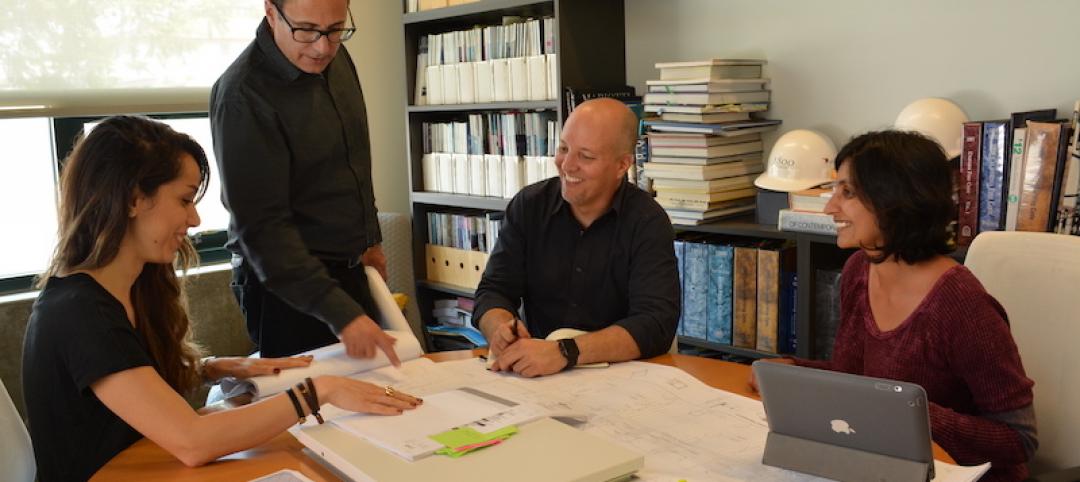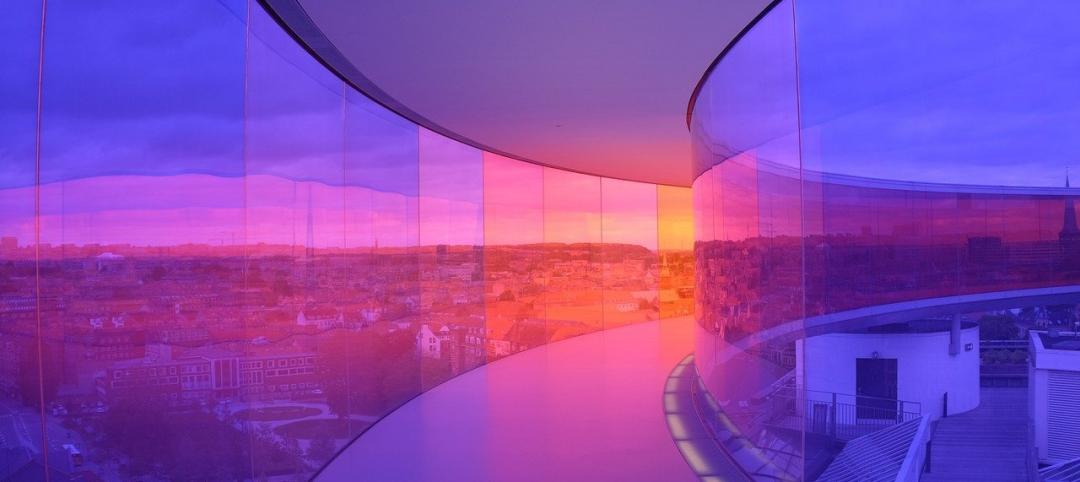DCI Artform, a global retail marketing agency based in Milwaukee, Wis., wanted a presence in a bigger city to attract talent and improve its accessibility for international customers.
TOP 100 OFFICE ARCHITECTURE FIRMS
Rank, Firm, 2015 Revenue
1. Gensler $593,420,000
2. HOK $138,657,000
3. Perkins+Will $118,380,000
4. Stantec $94,328,923
5. Skidmore, Owings & Merrill $75,673,007
6. Nelson Worldwide Holdings $66,167,382
7. ZGF Architects $58,827,045
8. CallisonRTKL $54,320,000
9. HGA $50,310,000
10. SmithGroupJJR $47,013,000
TOP 100 OFFICE CONSTRUCTION FIRMS
Rank, Firm, 2015 Revenue
1. Turner Construction Co. $2,507,876,248
2. Structure Tone $1,939,270,000
3. Gilbane Building Co. $1,457,237,000
4 .Balfour Beatty US $1,293,034,101
5. Holder Construction Co. $1,018,000,000
6. Skanska USA $848,654,281
7. PCL Construction Enterprises $814,339,952
8. AECOM $795,790,000
9. Clayco $702,000,000
10. BL Harbert International $673,085,875
TOP 70 OFFICE ENGINEERING FIRMS
Rank, Firm, 2015 Revenue
1. Jacobs $438,700,000
2. AECOM $285,000,000
3. Thornton Tomasetti $108,284,346
4. WSP | Parsons Brinckerhoff $93,672,000
5. Burns & McDonnell $59,216,746
6. Arup $55,609,224
7. Syska Hennessy Group $35,568,928
8. Dewberry $29,285,538
9. Hankins and Anderson $25,877,629
10. Benham Design $18,638,864
Last year, DCI opened a satellite office in downtown Chicago’s Illinois Center. The 8,000-sf space includes a creative design studio and “digital cave,” a virtual environment that uses high-resolution laser and stereoscopic projection and 3D computer graphics to present clients with options for product displays and branding.
“DCI is into retail theory and the science of what goes where to stimulate sales,” says Robert Benson, Principal with CannonDesign, which provided architectural, MEP, and audiovisual services to DCI. “The digital cave can show clients what customers recognize at 40 feet, 10 feet, and within touching distance.” DCI Artform is doubling its space in the building.
Technology is redefining how offices function. A recent Adobe survey of 1,003 office workers across the U.S. found that 81% think state-of-the-art technology is more important to where they work than other perks or amenities. Office design is evolving to where “it’s now about how people work with technology,” says Glenn Leitch, AIA, LEED AP, Director of Design, Highland Associates.
Marc Margulies, AIA, Principal/Owner, Margulies Peruzzi Architects, Boston, says offices still have three primary functions: to inspire productivity, attract and retain talent, and enhance the company’s brand. Technology is now essential for worker collaboration and mobility, and is affecting office design in every conceivable way, he says.
Susan Kohuth, ASID, NCIDQ, LEED AP, Principal of OZ Architecture’s Interior Design Workplace in Denver, points to Trimble’s 125,000-sf office in Westminster, Colo. OZ designed part of the rooftop for an R&D lab with an array of antennae that Trimble uses to test its GPS technology.
Technology is particularly salient to the growing trend of “hoteling” (where mobile employees schedule time and space in their offices) and “hot seating” or “free addressing” (where employees sit at whatever workstations happen to be available).
Stantec is engaged in a pilot program for Grant Thornton, testing hot seating in a 20,000-sf space in McLean, Va., to see if it “fits culturally,” says Stantec Principal Angie Lee, FAIA, IIDA, LEED BD+C.
Since 2015, Arcadis has converted 12 of its offices to 100% unassigned workstations, with four more in progress. The firm has cut office space needs by 30–50%. “We’re seeing momentum toward activity-based work, untethering employees from their desks,” says Jodi Williams, AICP, LEED AP ID+C, Senior Workplace Strategist for CallisonRTKL, an Arcadis company.
Perceptions about office design and functionality are being questioned, especially concerning employee work patterns.
The paucity of conference rooms is a common complaint in many offices. Before VOA Associates (now part of Stantec) started on a new 156,000-sf office for Grant Thornton in Chicago, it sent in a team to observe worker movement in the client’s other offices. VOA found that 60% of conference rooms were empty most of the time. They were either poorly located, too small, or had insufficient A/V support,  says Lee.
says Lee.
VOA designed Grant Thornton’s new office with a mix of variously sized offices, meeting rooms, and “huddle rooms,” where workers can plug in their mobile devices and share information on high-def screens mounted on the wall.
More companies are switching to standup desks, theoretically for health reasons. But Williams says she’s hearing from some clients that standup desks aren’t getting as much use as expected. Arcadis itself is moving toward 20% adjustable-height desks, she says.
There’s also a sense that office workers are more likely to accept change when they have input into the design and planning of workspaces.
SRAM, which makes bicycle parts, planned its new corporate headquarters as a space that “reinforced its culture,” says Fred Schmidt, IIDA, LEED AP, Interior Design Global Leader, Perkins + Will, Chicago.
P+W interviewed SRAM staff in each of the company’s departments. Employees were given the opportunity to comment on furniture mockups from three suppliers. SRAM conducted an internal contest where employees could design the bike racks for their workstations.
SRAM’s 72,000-sf headquarters, in a former meat-storage building on Fulton Street in Chicago, has space for advanced product development, a full machine shop, workbenches, a test track, and a kitchen and café that opens onto a terrace.
“Millennials are on to something when they talk about work-life environments,” says P+W’s Schmidt.
RETURN TO THE GIANTS 300 LANDING PAGE
Related Stories
Industry Research | Apr 9, 2021
BD+C exclusive research: What building owners want from AEC firms
BD+C’s first-ever owners’ survey finds them focused on improving buildings’ performance for higher investment returns.
Architects | Apr 2, 2021
Spring Has Sprung at Construction Specialties
Introducing a slew of sensational solids, metallic finishes that cast subtle and shimmering effects, and disposable curtains to complement our exclusive fabric line.
Multifamily Housing | Mar 30, 2021
Bipartisan ‘YIMBY’ bill would provide $1.5B in grants to spur new housing
Resources for local leaders to overcome obstacles such as density-unfriendly or discriminatory zoning.
Office Buildings | Mar 26, 2021
Finding success for downtown office space after COVID-19
Using the right planning tools can spur new uses for Class B and C commercial real estate.
Architects | Mar 25, 2021
The Weekly Show, March 25, 2021: The Just Label for AEC firms, and Perkins Eastman's Well-Platinum design studio
This week on The Weekly show, BD+C editors speak with AEC industry leaders about the Just Label from the International Living Future Institute, and the features and amenities at Perkins Eastman's Well Platinum-certified design studio.
Architects | Mar 23, 2021
Design firms KTGY, Simeone Deary Design Group unite to shape future of architectural design through experiential environments
With a bold vision to reshape how people experience spaces, residential design firm joins forces with interior design group, creating fully integrated architecture, branding, interiors and planning practice.
Architects | Mar 15, 2021
A life in architecture – Lessons from my father
A veteran designer looks back on the lessons his father, a contractor, taught him.
Architects | Mar 11, 2021
Calling all building design professionals: BD+C needs your expertise on design innovation in 2021
This new BD+C research project explores the leading drivers, sources of inspiration, and successful outcomes for design innovation projects and initiatives.
Coronavirus | Mar 11, 2021
The Weekly show, March 11, 2021: 5 building products for COVID-related conditions, and AI for MEP design
This week on The Weekly show, BD+C editors speak with AEC industry leaders about building products and systems that support COVID-related conditions, and an AI tool that automates the design of MEP systems.

















